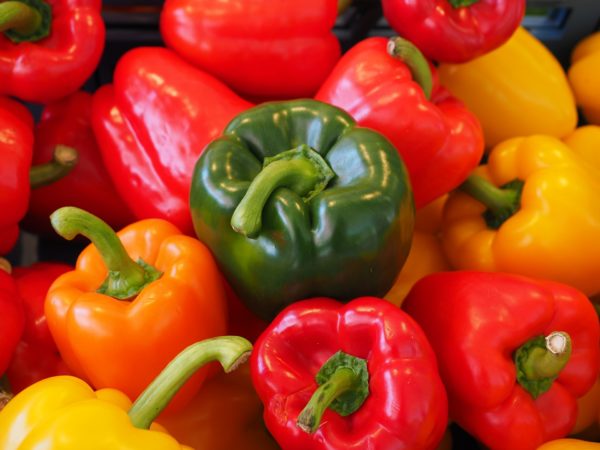
Pepper Bugai is a favorite of gardeners who prefer vegetables that ripen early. Pleasant and beneficial features of the variety consist precisely in its early ripening, beautiful yellow color and the height of the bush (reaches 60 cm in height with proper watering). His description certainly contains fleshy and thick walls, but in matters of taste, opinions differ somewhat.
Someone considers the taste to be special and unique, capable of competing with the most popular varieties, and for some it seems ordinary. Reviews of those who planted this variety are almost always positive. The relative unpretentiousness of pepper and its high productivity did not provide him with a place in the top five popular, although those who were involved in the cultivation of this culture, note its positive qualities.
A high yield is more than able to compensate for the costs of seedlings, mineral fertilizing and watering. Description of the variety and reviews of fans of bell pepper allow us to recommend Bugai pepper as a worthy example of domestic selection.
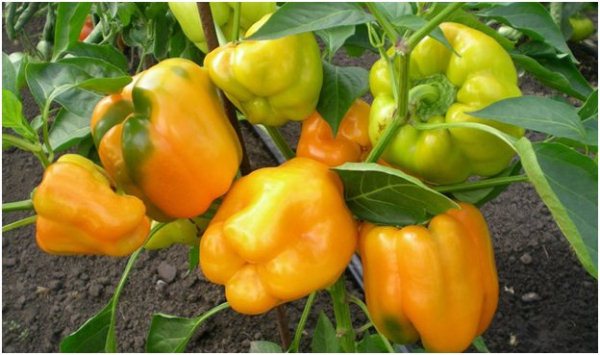
Content
Features of the variety and etiology of the name
Bugai pepper got its name because of the size of the fruit, which under optimal conditions can reach 500 g. The main purpose of the variety is fresh consumption. Lovers of early vegetables are happy to grow this variety of pepper, because it has the necessary pronounced taste of salad bell pepper and has thick walls (up to 1 cm thick), so juicy that they seem literally filled with juice.
Sometimes the crop does not have time to ripen in the middle lane, although the bush is full of fruits. At the first freezing of the soil, the pepper ceases to bear fruit. For most canning varieties, the main seeding season for winter is the end of summer, the beginning of autumn, and until October.
The characteristics of the variety include the excellent germination of seeds, which were personally collected at the right time, and the need to grow seedlings in a greenhouse from seeds. In the spring, when the night frost stops and the earth warms up a bit, it can be planted in open ground.
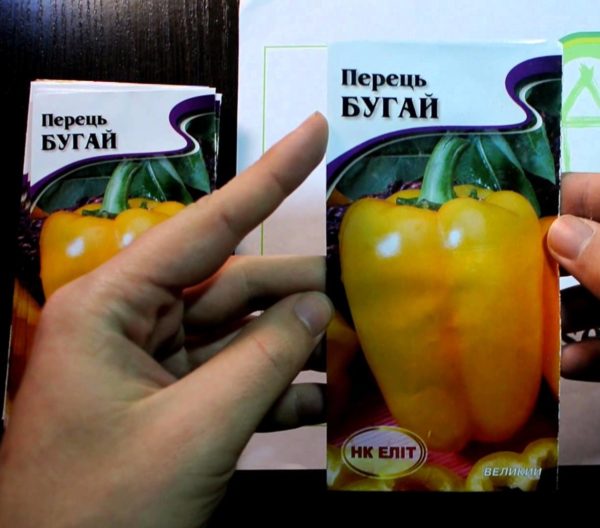
Arguments for choosing a variety
Bugai is a relatively new variety of salad pepper, which people who have already taken it as a trial option have already appreciated it. Reviews of those who cultivated the crop for the first time admit that they bought seeds for testing because of the ability of the pepper to ripen early, and they were also encouraged to buy increased fruit sizes.Few people can not be seduced by pepper, which ripens to half a kilogram and is capable of breaking the bush on which it grows with its weight.
However, the first experiment turned out to be successful, and when discussing popular and proven varieties, gardening specialists who regularly post reviews of plant varieties include the tried-and-true look in the ratings, listing the indisputable advantages of the Bugai pepper:
- matures one of the very first;
- resistant to common types of diseases of fruits and vegetables;
- requires minimal mineral top dressing;
- large fruit;
- the walls of the fruit are juicy, thick (up to 1 cm) literally filled with juice and can perfectly be used in the preparation of dishes of any category;
- suitable for canning for the winter in the form of vegetable salads, lecho and preparations for the first and second courses;
- fairly high productivity (yield of Bugai pepper: 4.3-5.5 kg / sq. m.);
- seedlings can be planted in the soil according to the scheme 50x50;
- universal variety, grows well in the greenhouse, perfectly accepts greenhouse conditions, excellent fruiting in open ground;
- he has a huge bush that can grow up to 60 cm (sometimes even higher);
- retains its appearance and taste for a long time.
The ripe varieties of bell pepper have a lot of positive aspects, and this attracts lovers of vegetables.
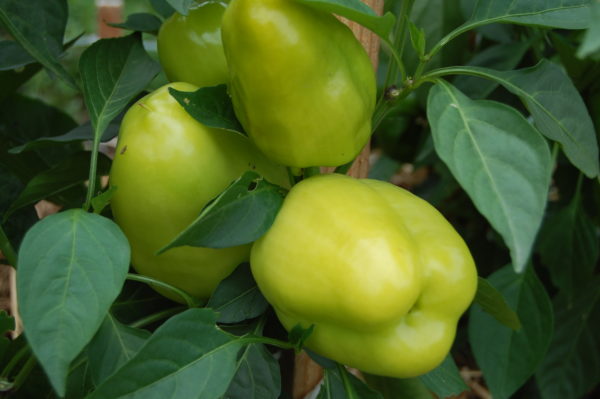
Deficiencies or arguments against
The undoubted merits of the variety, gardening lovers consider some of its qualities, which seem to be disadvantages to supporters of other varieties. Depending on addictions, you can really turn advantages into disadvantages.
The disadvantages and advantages of culture:
- the fruits are large, can break the bush;
- the bush is tall, requires a tight garter;
- it is necessary to water and make mineral top dressing;
- in the northern regions it is necessary to grow through seedlings;
- ordinary taste, nothing special stands out;
- peppers are too large (up to 500 g), can not be rolled up in its entirety;
- only grows yellow;
- there is too much juice in the walls of the fruit, which is at the expense of the pulp;
- begins to bear fruit too early and finishes with the first frosts (does not fit the season for canning and does not have time to ripen the entire crop);
- expelled in 100-110 (according to some sources, in 95-100) days;
- suitable only for fresh consumption, but can also be used as an excellent option for multi-component workpieces;
- seedlings should be planted already in early-mid-February;
- the method of planting seedlings is 50x50 cm (takes up too much space).
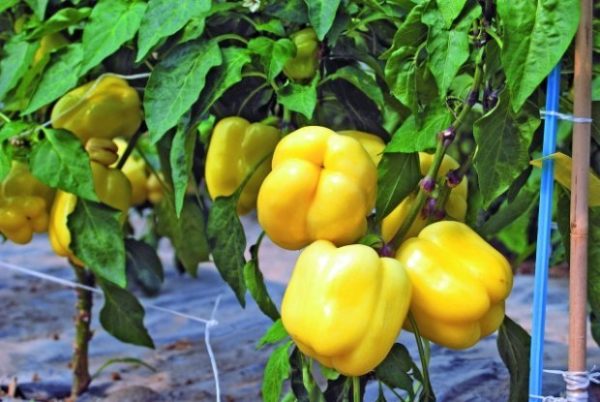
For reference: in some professional ratings of vegetable varieties compiled by specialists for amateurs, it is the Bugay variety that is called the best for preparing multicomponent preparations and it is recognized as one of the most popular today.
Growing conditions
According to the testimonies of those who were already engaged in the cultivation of this variety, individual bushes of a vegetable crop with the correct mineral bait reached 1.5 m, and it was possible to harvest without leaning if the bushes were correctly and tightly tied. At the same time, a standard combined mixture for feeding was bought in a specialized store.The length of some fruits reached 30 cm, and weight - up to 0.5 kg. Productivity varieties exceeded all expectations.
This is not surprising, because Bugai is a solid, strong, unpretentious hybrid grown by professional breeders, growing in open ground and suitable for cultivation in a greenhouse. One of the positive aspects of this variety is its resistance to various fruit diseases.
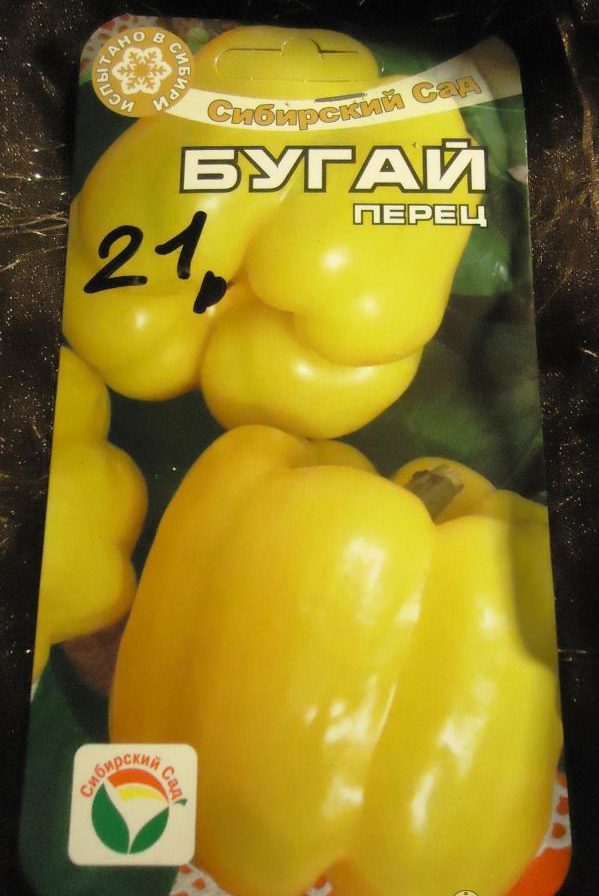
Planting on seedlings is carried out 60-70 days before the moment when they plan to plant it in open ground. For seed germination, the optimum temperature is considered to be from +26 to + 280C. Those who grew seeds purchased at the store used conventional plant growth stimulants, which are available on the market and are relatively inexpensive, and noted that the variety responds well to mineral dressing. Some craftsmen placed 5-6 plants per 1 square. m., but most planted 4.
https://youtu.be/WEXX1l7qGUU
A variety of bell pepper Bugai is grown even in Siberia using the method of preliminary dilution in a greenhouse. In warmer regions, it can be planted immediately in open ground, but greenhouse propagation speeds up ripening and increases the possibility of an early harvest. For those who grow vegetables for profit - this is the best option.




 Calorie pepper stuffed with meat and rice - BZHU per 100 grams
Calorie pepper stuffed with meat and rice - BZHU per 100 grams Gorky pepper - the best varieties for open ground
Gorky pepper - the best varieties for open ground Hot pepper seeds - the best varieties for open ground and reviews
Hot pepper seeds - the best varieties for open ground and reviews Capsicum tincture for hair - how to use and reviews
Capsicum tincture for hair - how to use and reviews